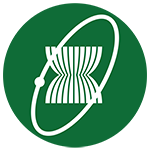ABDOMINAL WALL COMPRESSION AND PRONE POSITION EFFECTIVELY DISPLACE PELVIC SMALL BOWEL AND REDUCE IRRADIATED VOLUME
Abstract
Objectives: Small bowel is a dose limiting structure for pelvic irradiation, which is commonly used in several cancers. Moving the small bowel out of the pelvic irradiated field results in decreasing complications. In this study, we evaluate the efficacy of abdominal wall compression and prone position in displacing the small bowel out of the pelvic irradiated field, reducing patient thickness, decreasing the irradiated volume and increasing dose uniformity.
Material and Method: Ten cervical cancer patients with at least 20 cms separation at center of pelvic field were entered into this study. Oral contrast medium was used to visualize pelvic small bowel. Volume of irradiated tissue and small bowel area within the treatment ports was measured in supine position before and after abdominal wall compression and in prone position. The study was performed twice in each patient.
Results: The distance between the Anterior and Posterior field at center of pelvic field was decrease by about 3.8 cms after abdominal wall compression and 1.6 cms in prone position. Average of reduced irradiated volume after compression and prone position was 13.14% and 5.51% respectively (p<0.005). Better dose uniformity was obtained. Additionally, 49.49% of the mean small bowel area was diminished by abdominal wall compression whereas 26.40% by prone position (p<0.005).
Conclusion: Abdominal wall compression and prone position were effectively able to displace small bowel and reduce irradiated volume within pelvic treatment field. These simple, safe, inexpensive and reproducible techniques may decrease complications from pelvic irradiation.
Downloads
Metrics
References
Bentel GC. Treatment planning - head and neck region. In: Radiation therapy planning. Second edition. New York: McGraw-Hill, USA, 1996: 268-330
Griffiths SE, Short CA, Jackson C, Ash D. Head and neck techniques. In: Radiotherapy principles to practice a manual for quality in treatment delivery. London: Churchchill Livingstone, UK, 1994:189- 197
Sohn J, Suh J, Pohar S. A method for delivery accurate and uniform radiation dosages to the head and neck with asymmetric collimators and a _ single isocenter. Int J Radiat Oncol Biol Phys, 1994: 28: 753-760
Zhu L, Kron T, Barnes K, Johansen S, O’ Brien P. Junctioning of lateral and anterior fields in head and neck cancer: a dosimetric assessment of the monoisocentric technique (including reproducibility). IntJ Radiat Oncol Biol Phys, 1998: 41(1): 227-232
Bentel GC. Treatment planning — head and neck region. In: Radiation therapy planning. Second edition. New York: McGraw-Hill, USA, 1996:139
Gillin M, Kline R. Field separation between lateral and anterior fields on 6 MV linear accelerator. Int J Radiat Oncol Biol Phys, 1980; 6: 233-237
Sailer SL, Sherouse GW, Chaney EL, Rosenman JG, Tepper JE. A comparison of postoperative techniques for carcinoma of the larynx and hypopharynx using 3-D dose distributions. Int J Radiat Oncol Biol Phys, 1991; 21: 767-777
Williamson TJ. A technique for matching orthogonal megavoltage fields. IntJ Radiat Oncol Biol Phys, 1979; 5: 111-116
Klein EE, Taylor M, Michaletz-Lorenz M, Zoeller D, Umfleet W. A monoisocentric technique for breast and regional nodal therapy using dual asymmetric jaws. Int J Radiat Oncol Biol Phys, 1994; 28:753-760
Downloads
Published
How to Cite
Issue
Section
License
Copyright (c) 2023 The ASEAN Journal of Radiology

This work is licensed under a Creative Commons Attribution-NonCommercial-NoDerivatives 4.0 International License.
Disclosure Forms and Copyright Agreements
All authors listed on the manuscript must complete both the electronic copyright agreement. (in the case of acceptance)













